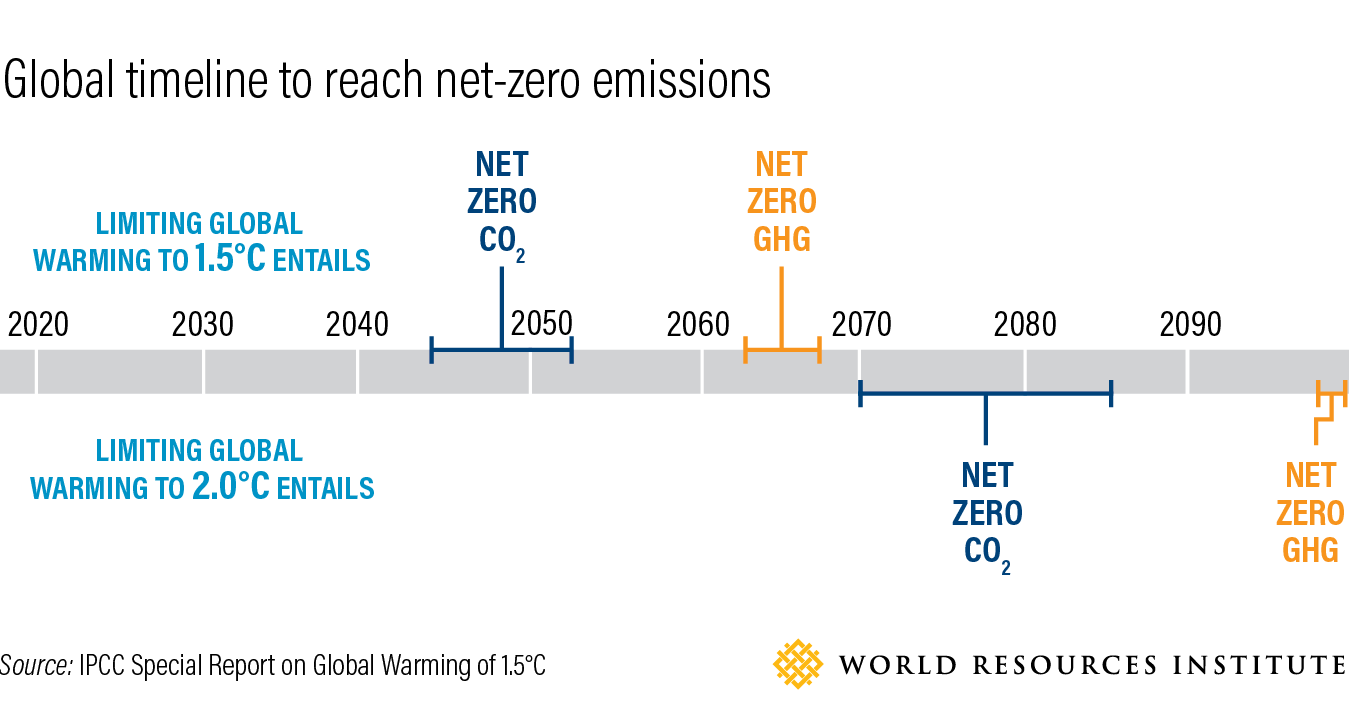Under the Paris Agreement, countries agreed to limit warming well below 2 degrees C (3.6 degrees F), ideally to 1.5 degrees C (2.7 degrees F). Global climate impacts that are already unfolding under today’s 1.1 degrees C (2 degrees F) of warming — from melting ice to devastating heat waves and more intense storms — show the urgency of minimizing temperature increase.
The latest science suggests that reaching the Paris Agreement’s temperature goals will require reaching net-zero emissions on the following timelines:
In scenarios limiting warming to 1.5 degrees C, carbon dioxide (CO2) needs to reach net-zero between 2044 and 2052, and total GHG emissions must reach net-zero between 2063 and 2068. Reaching net zero earlier in the range avoids a risk of temporarily overshooting 1.5 degrees C. Reaching the top of the range almost guarantees surpassing 1.5 degrees C for some time before it eventually drops down.
In scenarios limiting warming to 2 degrees C, CO2 needs to reach net zero by 2070 (for a 66% likelihood of limiting warming to 2 degrees C) to 2085 (with a 50-66% likelihood). Total GHG emissions must reach net-zero by the end of the century or beyond.



Leave A Comment